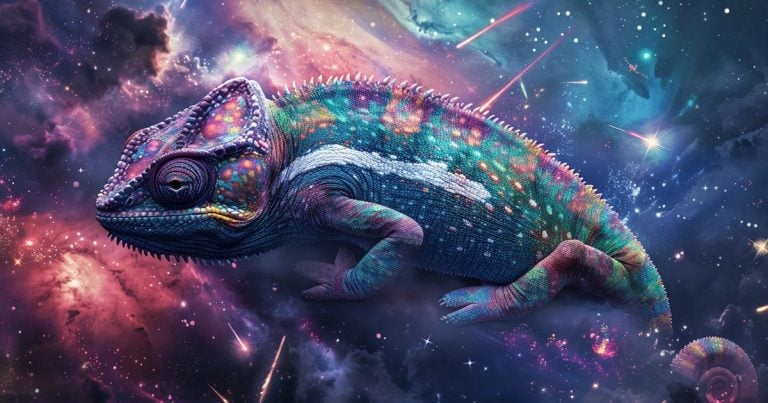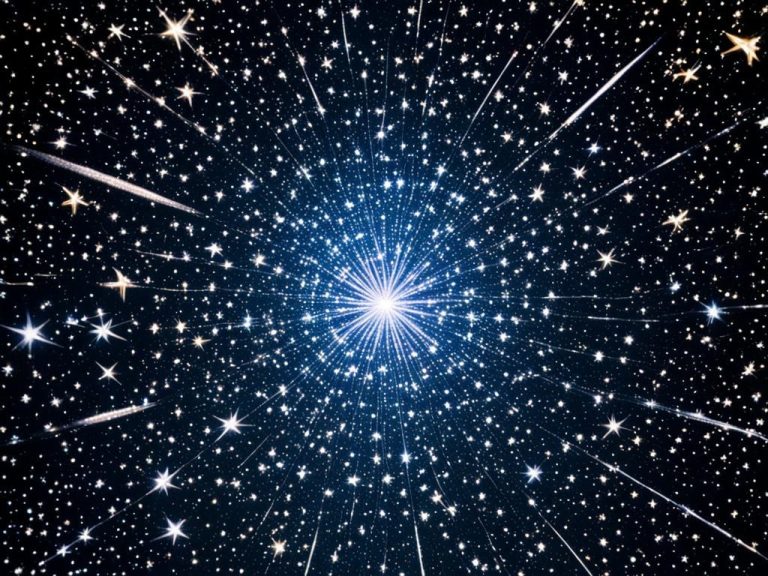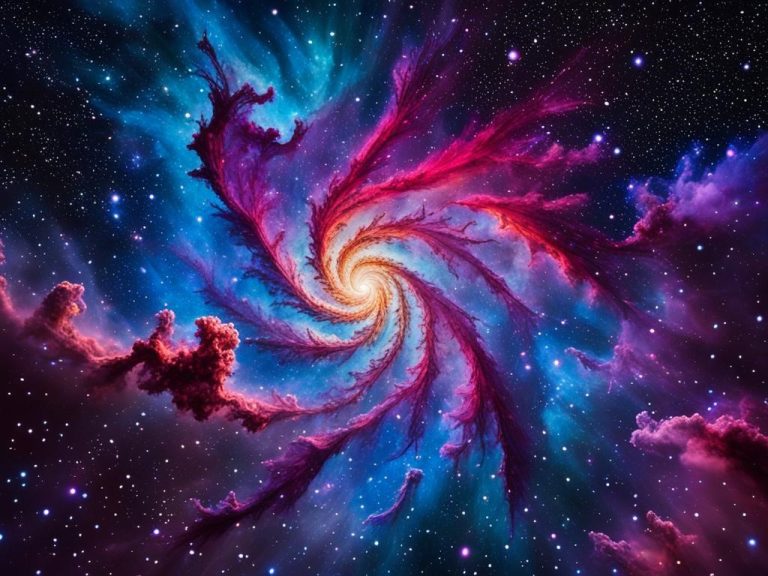Explore the Mysteries of Chamaeleon Constellation
Modified: August 27, 2024 Author: International Star Registry
Did you know the Chamaeleon constellation hides a fascinating secret in the southern sky? It’s a small, faint group of stars named after a chameleon. The name comes from its shape, which looks like the animal. Since the late 16th century, when Dutch astronomer Petrus Plancius found it, this constellation has amazed many. It connects history, myths, and the wonders of science for those who look closely.

Key Takeaways:
- Chamaeleon constellation is a small and faint constellation located in the southern sky.
- The constellation is named after the chameleon due to its shape resembling the creature.
- Chamaeleon was first introduced by Dutch astronomer Petrus Plancius in the late 16th century.
- The constellation is known for its rich history, mythology, and scientific wonders.
- Exploring Chamaeleon can unveil mysteries and provide a deeper understanding of the cosmos.
The Enigmatic Shape of Chamaeleon
The Chamaeleon constellation fills 131 square degrees, making it small but interesting in the night sky. It’s south of the equator and surrounded by constellations like Musca, Carina, and Apus. Chamaeleon is known for its mysterious form and the hidden treasures it reveals.
Stargazers can find many intriguing things in Chamaeleon. Star clusters like NGC 3195 and NGC 3114 show us about how stars are born. Nebulae, which are clouds of gas and dust, are where new stars are made. They also show us protostars and Herbig-Haro objects, making them fascinating.
The main stars of Chamaeleon are Alpha, Beta, and HD 63454. Alpha shines the brightest with a magnitude of 4 and is of spectral type F5III. It’s about 63.5 light-years from Earth. Beta and HD 63454 also add to Chamaeleon’s beauty from farther away.
- Chamaeleon is one of the 88 constellations known.
- Its unique shape and position have drawn people for ages.
- It includes the place where new stars start, the Chameleon I dark cloud complex, and the Chamaeleon Cloud Complex, which is near us and full of young stars.
- Astronomers study amazing things in Chamaeleon, like young planets and ring structures around stars. This is all seen with instruments such as SPHERE at ESO’s Paranal Observatory.
Want to remember Chamaeleon’s beauty forever? International Star Registry lets you name a star in this constellation. It’s a perfect way to mark special moments or show your love for space.
To learn more about Chamaeleon’s wonders, check out these links:
Next, we’ll look into the fascinating stories about Chamaeleon’s name and myths surrounding it.
Unveiling the Mythology of Chamaeleon
The Chamaeleon constellation stands out because it has a simple backstory. Its name comes from the Greek word “chamaileon,” which means “the ground lion.” This is because it looks like the unique lizard. Dutch astronomer Petrus Plancius named it in the late 16th century.
The chameleon’s story goes beyond traditional myths. It is known for being patient, adaptable, and resourceful. These qualities relate to the Chamaeleon constellation’s traits. This makes the constellation more meaningful.
In astronomy, the Chamaeleon constellation is special because of its look and location. It is near the south celestial pole. You can see it best from places between 15 and 90 degrees south. Even though it has faint stars, its chameleon shape makes it stand out.
Chamaeleon’s lack of myth doesn’t lessen its importance. It connects us to early ideas about nature. The fact that it looks like a chameleon interests both scientists and sky watchers. It brings wonder to the night sky.
The Scientific Wonders Within Chamaeleon
Chamaeleon is both fascinating in myth and in science. It includes the Chamaeleon I dark cloud complex. This area has dust and gas, making it a place for stars to be born.
In Chamaeleon, there are amazing open star clusters. These offer key info about star growth and how clusters work. They let us peek into the incredible world of space.
Astronomers learn a lot about stars in Chamaeleon’s clusters. They see how stars form and change, and how they affect each other. This helps us know more about these space communities.
Chamaeleon’s mysteries still draw scientists and thought. As we learn more, Chamaeleon is a place for new findings in space. It’s exciting for researchers to explore and unlock its secrets.
Name a Star in Chamaeleon with International Star Registry
Looking for a special gift idea? International Star Registry offers a unique chance – to name a star in the Chamaeleon constellation. It’s perfect for birthdays, anniversaries, or Christmas. Naming a star is a great way to show how much someone means to you.
Imagine the joy of owning a piece of the cosmos, a star shining brightly in the Chamaeleon constellation, bearing the name of your choice. With International Star Registry, you can make this dream a reality.
Naming a star is a unique and heartfelt gesture, perfect for commemorating special occasions such as birthdays, Christmas, or anniversaries. Whether it’s to honor a loved one, celebrate a milestone, or simply indulge in the wonder of the universe, naming a star in Chamaeleon is a timeless gift that will be cherished for years to come.
To name a star in Chamaeleon or any other constellation, simply visit starregistry.com and follow the straightforward process. Choose your star, select a constellation, personalize your star certificate, and bask in the delight of owning a celestial treasure.
Buying a star is easy with International Star Registry. Go to their website, pick the Chamaeleon constellation, choose a package, and buy. In a few steps, you’ll have a special and unique gift ready.
If you want to give a memorable present, think about naming a star in Chamaeleon. With International Star Registry, you can make a memory that glows in the night sky forever.
Buy a Star and Embrace the Cosmos
Buying a star in Chamaeleon for a loved one is special. It’s a gift that will be unforgettable. Imagine their happiness with a star named after them, sparkling in the sky.
International Star Registry is top for naming stars. It’s known for its quality and experience. Buying here, you know you’re with a trusted group.
Every star package includes a certificate. It has the star’s name, dedication date, and location. It shows the star’s special meaning in a beautiful way.
Think about the joy of looking up at the night. A star in Chamaeleon carries a special person’s name. This unique bond shows our connection to the universe.
Create a Lasting Memory
Buying a star means more than a simple gift. It’s a way to mark eternal memories. This gift is an inspiration whenever looking at the night sky.
Grab a star’s name in the Chamaeleon constellation. Let someone’s light shine forever. Enjoy the universe’s beauty with International Star Registry.
Unveiling the Mystery of CN Cha
In the Chamaeleon constellation, there’s a fascinating star called CN Cha. It was found in 1963 as a Mira variable star. Since then, CN Cha has amazed us with its mysterious behavior.
In 2013, CN Cha suddenly became eight times brighter, surprising everyone. This event allowed scientists to see its amazing power. It stayed bright for about three years before slowly dimming.
CN Cha is special because it’s a type of nova that doesn’t often happen. It’s a slow symbiotic nova because of how it erupts. These novae explode due to matter moving between stars in a binary system.
Even though studying CN Cha is hard, new technology is helping. The Vera Rubin Observatory will soon give us a lot of data. This means we can learn more about the Chamaeleon constellation and CN Cha.
CN Cha can change its brightness a lot, showing us different light levels. The Gaia DR2 data tells us its brightness well. It’s very bright, which makes it stand out even more.
The RUWE score shows CN Cha’s observations are very reliable. But, it wasn’t listed in catalogs from the Hipparcos satellite at first. This suggests it might have been much dimmer back then.
The Hubble Space Telescope has helped a lot in studying CN Cha. It’s been in space since 1990, thanks to several repair missions. These have let us keep learning about the universe.
Hubble’s work has led to many important papers about space. Its findings have helped us understand space better over time.
As we study CN Cha more, we learn a lot about space. It shows us the amazing things hidden in the Chamaeleon constellation. This gives us a peek at the beautiful yet mysterious universe.

The Historical Significance of Chamaeleon
Chamaeleon is a constellation in the Southern Hemisphere with a deep history since the late 1500s. Dutch navigators Pieter Dirkszoon Keyser and Frederick de Houtman made it. Their work was included in Johann Bayer’s “Uranometria” in 1603, marking Chamaeleon a official constellation by the International Astronomical Union (IAU).
Chamaeleon has always interested both astronomers and the public. Its shape and place in the sky spark curiosity and desire for exploration. Notable stars like Alpha and Beta Chamaeleontis add to its beauty.
Chamaeleon also has interesting things happening in it. For example, the Eta Chamaeleontis cluster, or Mamajek 1, is a group of young stars about eight million years old. It’s a must-see in the constellation.
Chamaeleon is known for the Chamaeleon cloud complex too. These clouds give birth to stars like the T Tauri type. They are several hundred light-years away from us.
One of its highlights is the planetary nebula NGC 3195, over 5,500 light-years away. It stands out with an apparent magnitude of 11.6, drawing attention from sky watchers.
If you want to know more about Chamaeleon, here are some resources to check out:
- Chamaeleon: Southern constellation – Learn more about Chamaeleon and why it’s important in the South.
- Chamaeleon – Wikipedia – Explore Chamaeleon’s history, myths, and science.
- Chamaeleon Constellation Guide – Find out about the stars and cool facts of Chamaeleon.
By diving into Chamaeleon’s history, you’ll grow to love this stunning part of the night sky.
Notable Features of Chamaeleon
The Chamaeleon constellation shines with amazing stars that catch the eye of both scientists and those who love looking at the night sky. It is home to the Chamaeleon Cloud Complex and several famous stars. Notable stars include Alpha Chamaeleontis, Beta Chamaeleontis, and HD 63454. These stars teach us a lot about how stars come to be and the history of the Chamaeleon constellation.
Alpha Cha is a pair of stars, about 63 light-years away from us. They move around each other every 76.85 years. This pair of stars helps us learn more about how stars are born and grow.
Beta Cha is a young, still-developing star in Chamaeleon. It’s thought to be only 5 to 6 million years old. This star changes in brightness over time. Astronomers study it to learn more about how stars like it form and how planets might develop around them.
HD 63454 is a yellow-white star in the constellation, not too far at 97 light-years away. It shines bright enough to be seen without a telescope if the night is clear. This star is important for understanding stars that are not too small or too big.
The Chamaeleon Cloud Complex is a special part of the constellation. It is made up of dark clouds where new stars are born. These clouds are like star birthplaces. Scientists look to these clouds to better understand how stars form and what’s between the stars in space.
When we explore the Chamaeleon constellation, we uncover its beautiful secrets. It shows us a lot about our universe and adds to our big book of space knowledge. Each star and cloud is a chance for astronomers to learn more about the cosmos and contribute to what we know.
The Future of Chamaeleon Exploration
Exploring the Chamaeleon constellation offers a chance to learn more about stars and the universe. High-tech tools let us study space better.
Astronomers are uncovering the secrets of the Chamaeleon stars. They want to know how these stars form and grow.
They’ve found young stars and places where planets might form. This information helps us imagine life beyond Earth.

Chamaeleon is perfect for seeing how groups of stars affect space around them. We can learn a lot by watching how stars interact with the stuff between them.
There are many missions and tools ready to explore Chamaeleon. Scientists from different fields work together to understand space and our part in it.
Conclusion
Exploring the Chamaeleon constellation is like taking a trip through time and space. Its unique form and rich stories make the night sky mysterious and intriguing. This area also holds many scientific secrets, offering much to astronomers and those who love the stars.
Naming a star through International Star Registry is a great way to remember your interest in the Chamaeleon constellation. This service lets you celebrate a special moment or honor someone you care about. You’ll get a certificate with your star’s name and be part of supporting astronomy research.
If you enjoy looking at the stars, the Chamaeleon constellation is a great starting point for exploring our universe. You can make it even more special by naming one of its stars. This is your chance to begin a journey into the beauty of the night sky. Own a piece of its magic with International Star Registry. Start today and see where the stars take you.
FAQ
What is the Chamaeleon constellation?
The Chamaeleon constellation is small and faint. It sits in the southern sky. It got its name from a chameleon because its shape looks like one.
Where is the Chamaeleon constellation located?
It’s found in the southern sky. Musca, Carina, Octans, Mensa, and Apus are nearby constellations.
Does the Chamaeleon constellation have a rich mythology?
Chamaeleon doesn’t have a big story like most constellations do. It’s named after the chameleon because it looks like one.
What scientific wonders can be found within the Chamaeleon constellation?
In this constellation, new stars are born in the Chamaeleon I dark cloud complex. There are also open star clusters. These help us learn about stars and how they grow together.
How can I name a star in the Chamaeleon constellation?
Go through International Star Registry. They offer certificates for named stars. This lets you feel like you own a part of space.
Can I buy a star for someone as a gift?
Yes, purchasing a star in Chamaeleon is a great idea for special days. Like birthdays, anniversaries, or Christmas, it’s a special and memorable gift.
What is CN Cha in the Chamaeleon constellation?
CN Cha is a special star in Chamaeleon. It was first seen as a Mira variable, but then found to be a bright star that doesn’t change. This teaches us about stars and novae.
What is the historical significance of the Chamaeleon constellation?
Chamaeleon became an official constellation in the 16th century. It was one of the 12 new southern stars added in 1603. The International Astronomical Union (IAU) recognizes it.
What are some notable features of the Chamaeleon constellation?
It features stars like Alpha Chamaeleontis, Beta Chamaeleontis, and HD 63454. There’s also the Chamaeleon Cloud Complex, with its dark molecular clouds.
What does the future hold for Chamaeleon exploration?
Exploring Chamaeleon further, we may find more about how stars grow and the universe. It offers a chance to learn new and important things about our galaxy.
Source Links
- Discovery of a Mystery Hidden in Chamaeleon – https://aasnova.org/2021/03/17/discovery-of-a-mystery-hidden-in-chamaeleon/
- The Chamaeleon Constellation – https://www.universetoday.com/20114/chamaeleon/
